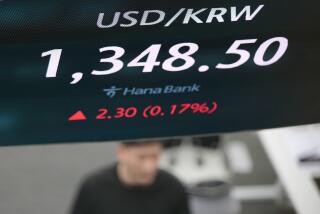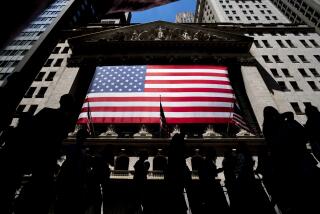Gold surges above $1,780 an ounce, its highest level in 3 months
- Share via
Reporting from New York — While the Dow Jones industrial average has risen toward 13,000, another high-profile market has unexpectedly risen alongside it: gold.
The price of the precious metal has surged since the beginning of the year and rose every day this week to climb above $1,780 an ounce Thursday, its highest level in three months.
Some investors worried last fall that gold had lost its luster when its price came crashing down amid fears of a double-dip recession.
Since the beginning of the year, though, the yellow metal has regained its allure as investors once again sought out a stable place to store money. Some investors have sought safer bets amid economic uncertainty in Europe, which has triggered gyrations in the dollar and euro.
Even gold skeptics are being won over.
“I don’t like gold. I don’t think the world is coming to an end, but I continue to be bullish on gold,” said Dennis Gartman, publisher of the Gartman Letter, a daily investing newsletter.
The rally in the precious metal has caught some analysts off guard because gold has not traditionally moved in sync with the stock market. Instead, it has frequently been viewed as a place to store money when stocks are unattractive.
This time around, stocks and gold have moved up together — but not for the same reasons, according to market experts.
The rise in the stock market has been driven by a growing number of promising indicators about the health of the U.S. economy.
Stocks rallied Thursday after the Labor Department announced that the number of people filing for unemployment benefits remained at the lowest level since March 2008 for the second straight week. Meanwhile, a report from the Federal Housing Finance Agency showed that home prices climbed 0.7% in December.
The Dow rose 46.02 points, or 0.4%, to 12,984.69. The Standard & Poor’s 500 index gained 5.8 points, 0.4%, to 1,363.46.
“The economic data coming out has had a decidedly positive spin to it,” said Jeff Saut, chief investment strategist at Raymond James. “Even employment numbers are turning. Housing is getting better. If you’re sitting on too much cash, the market is running away from you.”
Gold, on the other hand, has been more influenced by actions taken by central banks around the world. When gold rose near $2,000 an ounce last summer, at least some of the explanation was the Federal Reserve’s loose monetary policy. With more money sloshing around in the economy, the dollar became less attractive and investors poured into gold.
The crash in gold prices last fall confused many analysts, who expected it to be a reliable place to park money when the European economy fell into turmoil. The opposite happened in part because investors wanted to have as much money available in cash as possible and sold their gold to get it.
“If things went badly, you need cash to survive,” said Bart Melek, the commodity strategist at Toronto-Dominion Bank. “Gold got caught up with it as well.”
More recently, the European turmoil has settled down at the same time that the European Central Bank has acted more like the Federal Reserve in giving cheap loans to private banks. That has once again raised fears of inflation — as has the surge in oil prices — and driven investors to buy up precious metals.
“The less valuable your dollar, the more valuable your ounce of gold,” said David Christensen, chief executive of ASA Gold and Precious Metals.
Other factors are also being given credit for gold’s rise, including an increasing demand for gold in China and moves by many central banks around the world to replace dollar and euro reserves with the yellow metal.
“Gold holds particular appeal for countries attempting to diversify their reserves away from the U.S. dollar,” Morningstar analyst Joung Park wrote in a research note.
More to Read
Inside the business of entertainment
The Wide Shot brings you news, analysis and insights on everything from streaming wars to production — and what it all means for the future.
You may occasionally receive promotional content from the Los Angeles Times.










